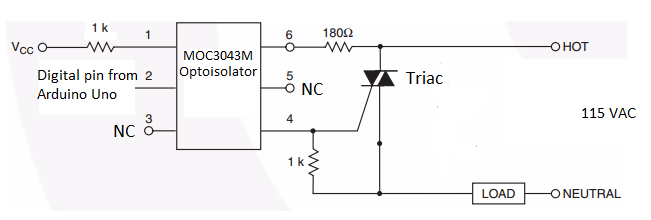*****************************************Arduino Code*************************************************
/*
Example program for using sleep modes and watch dog timer in Arduino. This example code was used in a sleep mode tutorial video on the ForceTronics YouTube Channel.
This code is open for anybody to use at their own risk*/
/*WDT BYTE variables for setting timer value
WDTO_15MS
WDTO_30MS
WDTO_60MS
WDTO_120MS
WDTO_250MS
WDTO_500MS
WDTO_1S
WDTO_2S
WDTO_4S
WDTO_8S */
#include <avr/sleep.h>
//We use part of the WDT library, but have to use registers as well since library does not support interrupt mode for WDT
#include <avr/wdt.h>
int led = 13; //variable for pin that the LED is on
int tog = 1; //variable that toggles between traditional delay() function and WDT sleep delay function
void setup() {
wdt_disable(); //Datasheet recommends disabling WDT right away in case of low probabibliy event
pinMode(led, OUTPUT); //set up the LED pin to output
}
void loop() {
if(tog) { //use traditional delay function
digitalWrite(led, HIGH); // turn the LED on (HIGH is the voltage level)
delay(1000); // wait
digitalWrite(led, LOW); // turn the LED off by making the voltage LOW
delay(1000); // wait
tog = 0; //toggle variable
}
else { //after blinking LED setup interrupt and then go to sleep. Note that sleep will only happen once sinc
digitalWrite(led, HIGH); // turn the LED on (HIGH is the voltage level)
delay(1000); // turn the LED on (HIGH is the voltage level)//
digitalWrite(led, LOW); // turn the LED off by making the voltage LOW
delayWDT(WDTO_1S); // Use WDT sleep delay function, argument is byte variable from WDT Library
//delayWDT(0x06); //Use WDT sleep delay function, argument is byte value that sets timer to 1 second
tog = 1; //toggle variable
}
}
//This function serves as a power saving delay function. The argument is a Byte type variable that is used to set the delay time
//The function sets up sleep mode in power down state. The function then sets up the WDT timer in interrupt mode and sets it.
//It then puts the Arduino to sleep for the set time. Upon wake up the WDT and sleep mode are shut off
void delayWDT(byte timer) {
sleep_enable(); //enable the sleep capability
set_sleep_mode(SLEEP_MODE_PWR_DOWN); //set the type of sleep mode. Default is Idle
ADCSRA &= ~(1<<ADEN); //Turn off ADC before going to sleep (set ADEN bit to 0)
WDTCSR |= 0b00011000; //Set the WDE bit and then clear it when set the prescaler, WDCE bit must be set if changing WDE bit
WDTCSR = 0b01000000 | timer; //Or timer prescaler byte value with interrupt selectrion bit set
// WDTCSR = 0b01000110; //This sets the WDT to 1 second
wdt_reset(); //Reset the WDT
sleep_cpu(); //enter sleep mode. Next code that will be executed is the ISR when interrupt wakes Arduino from sleep
sleep_disable(); //disable sleep mode
ADCSRA |= (1<<ADEN); //Turn the ADC back on
}
//This is the interrupt service routine for the WDT. It is called when the WDT times out.
//This ISR must be in your Arduino sketch or else the WDT will not work correctly
ISR (WDT_vect)
{
wdt_disable();
MCUSR = 0; //Clear WDT flag since it is disabled, this is optional
} // end of WDT_vect









